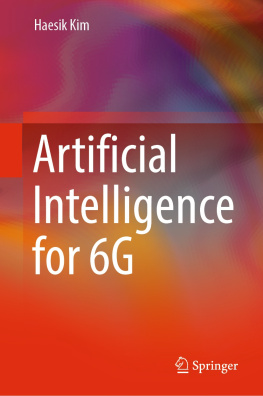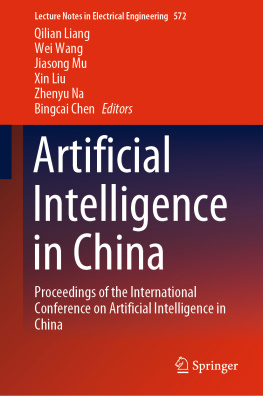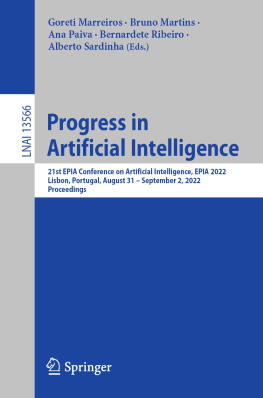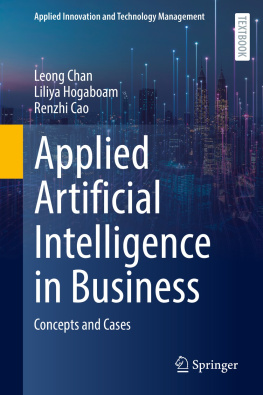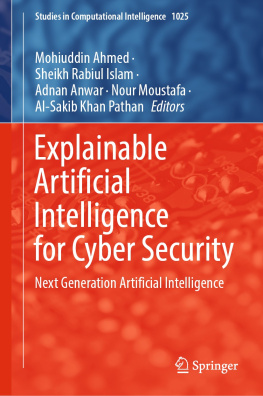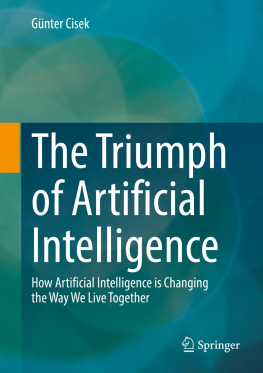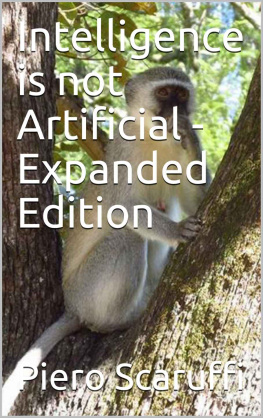Haesik Kim - Artificial Intelligence for 6G
Here you can read online Haesik Kim - Artificial Intelligence for 6G full text of the book (entire story) in english for free. Download pdf and epub, get meaning, cover and reviews about this ebook. year: 2022, publisher: Springer International Publishing, genre: Romance novel. Description of the work, (preface) as well as reviews are available. Best literature library LitArk.com created for fans of good reading and offers a wide selection of genres:
Romance novel
Science fiction
Adventure
Detective
Science
History
Home and family
Prose
Art
Politics
Computer
Non-fiction
Religion
Business
Children
Humor
Choose a favorite category and find really read worthwhile books. Enjoy immersion in the world of imagination, feel the emotions of the characters or learn something new for yourself, make an fascinating discovery.
- Book:Artificial Intelligence for 6G
- Author:
- Publisher:Springer International Publishing
- Genre:
- Year:2022
- Rating:4 / 5
- Favourites:Add to favourites
- Your mark:
- 80
- 1
- 2
- 3
- 4
- 5
Artificial Intelligence for 6G: summary, description and annotation
We offer to read an annotation, description, summary or preface (depends on what the author of the book "Artificial Intelligence for 6G" wrote himself). If you haven't found the necessary information about the book — write in the comments, we will try to find it.
Artificial Intelligence for 6G — read online for free the complete book (whole text) full work
Below is the text of the book, divided by pages. System saving the place of the last page read, allows you to conveniently read the book "Artificial Intelligence for 6G" online for free, without having to search again every time where you left off. Put a bookmark, and you can go to the page where you finished reading at any time.
Font size:
Interval:
Bookmark:


This Springer imprint is published by the registered company Springer Nature Switzerland AG
The registered company address is: Gewerbestrasse 11, 6330 Cham, Switzerland
To my wife Hyeeun,
daughter Naul,
son Hanul
and
mother Hyungsuk.
The cellular systems have been incrementally evolved, and the old and new network equipment co-exists for a certain period. Likewise, the 4G equipment will continuously roll out, adopt a new feature, and evolve to 5G systems. 5G systems are deployed progressively. The transition to 5G may take longer time than 4G because many different features should be included. While 5G systems are now deployed, research groups of cellular communications and networks started investigating beyond 5G systems and conceptualizing 6G systems. 6G will revolutionize the wireless communications and networks more intelligently with higher requirements than 5G systems. In the era of 6G, we need a game-changing approach. 6G systems will redefine the communications and networks depending on the required services. 6G business will not play a game but change a game. In order to support new requirements and services, a new blood technology is required. Artificial intelligence (AI) and machine learning (ML) will be one of key technologies for 6G. They are now matured technologies and improve many other research fields significantly. AI and ML make our day-to-day life easier. They pervade every aspect of our life. For example, we use mobile phone apps such as maps and navigation, facial recognition, autocorrect text, search recommendation, and so on. In addition, Chabot, social media, social media, and Internet banking are widely used. They all are based on AI and ML technologies. Thus, many experts and businessmen expect that they can dramatically improve the efficiencies of our workplaces as well as create new applications and services. AI will play a critical role in wireless communications and networks and change how we design and manage 6G communications and networks. We expect that AI makes communications and networks design and management smarter and safer. Key question is not about whether but when and how to implement AI in 6G communication systems.
This book introduces AI techniques for wireless communications and networks and helps audiences find an optimal, sub-optimal, or trade-off solution for each communications and networks problem using AI techniques. The target audiences are senior undergraduate students, graduate students, and young researchers who have a background about fundamentals of wireless communications and networks and start studying AI and ML techniques. From this book, audiences understand how to obtain a solution under specific conditions and realize the limit of the solution. This book introduces, in a step-by-step manner, AI techniques such as unsupervised learning, supervised learning, reinforcement learning, and deep learning and explains how they are used for wireless communications and networks system. The organization of the book is as follows: In Part I, AI techniques are introduced. It will provide audiences with a mathematical background about AI algorithms. Unsupervised learning includes hierarchical clustering, partitional clustering, association rule mining, and dimensionality reduction. Supervised learning covers decision tree, K-nearest neighbouring, and support vector machine. Linear regression, gradient descent algorithms, and logistic regression are discussed. In reinforcement learning, both model-based approaches and model-free approaches are investigated. Deep learning is discussed from a perceptron to neural networks, convolutional neural networks, and recurrent neural networks. In Part II, 6G communication and network systems are designed and optimized using both wireless communications and networks techniques and AI techniques. In physical layer, data link layer, and network layers, key algorithms are selected and introduced. AI techniques are adopted in wireless communications and networks systems. We look into how AI techniques help them to improve the performance. 6G systems are now under discussion in academy, standardization body, and industry. 6G use cases, requirements, and key enabling techniques are discussed as a preliminary. In physical layer, channel model, signal detection, channel estimation, error control coding and modulation, and MIMO are explained. In data link layer, we focus on resource allocation techniques as one selected research topic. In network layer, cellular system is introduced. We focus on network traffic prediction techniques as one of key AI-enabled network layer techniques.
I am pleased to acknowledge the support of VTT Technical Research Centre of Finland and Springer and also the valuable discussion of my colleagues and experts in EU project 5G-HEART. I am grateful for the support of my family and friends.
The 3rd Generation Partnership Project
5GThe fifth generation
5GC5G core
6GThe sixth generation
ABCArtificial bee colony
ADCAnalog-to-digital converter
AGIArtificial general intelligence
AIArtificial intelligence
AIDAutomatic interaction detection
AMFAccess and mobility management function
ANIArtificial narrow intelligence
ANNArtificial neural network
APIApplication programming interface
APSKAmplitude phase shift keying
AQMActive queue management
ARIMAAutoregressive integrated moving average
ASAccess stratum
ASIArtificial super intelligence
Font size:
Interval:
Bookmark:
Similar books «Artificial Intelligence for 6G»
Look at similar books to Artificial Intelligence for 6G. We have selected literature similar in name and meaning in the hope of providing readers with more options to find new, interesting, not yet read works.
Discussion, reviews of the book Artificial Intelligence for 6G and just readers' own opinions. Leave your comments, write what you think about the work, its meaning or the main characters. Specify what exactly you liked and what you didn't like, and why you think so.

